Libby Heaney & Sarah Shin
How can the empirical fields of science and technology be reimagined to reflect a more mysterious reality? Might quantum physics offer a useful framework?
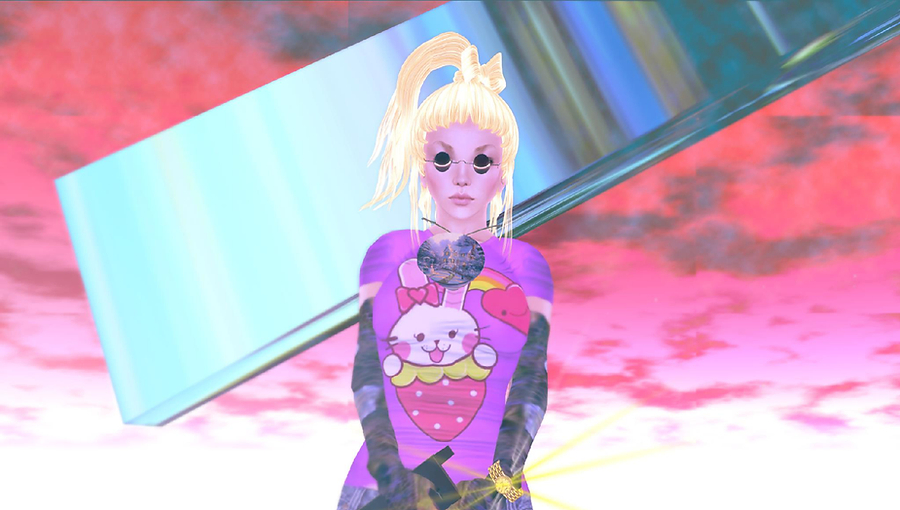
Last week saw the launch of On NFTs, a major survey of art on the blockchain edited by Robert Alice and published by Taschen. The collector’s edition, hard code edition, and art editions will be available to buy at the end of next month. Spreads devoted to the 101 artists featured in this book are accompanied by ten essays on topics including DAOs, collecting, and algorithmic art. Outland was invited to contribute to a chapter entitled “On the Metaverse.” The chapter’s introduction by Outland editor-in-chief Brian Droitcour traces the evolution of the concept of the metaverse from Neal Stephenson’s 1992 novel Snow Crash, right up to the arrival of blockchain-based metaverses such as Decentraland and Cryptovoxels. This is followed by a conversation between curator Hans Ulrich Obrist and Jason Li, founder and CEO of Outland, and Christopher Y. Lew, Outland’s former chief artistic director. Their conversation, which explores speculative possibilities of the metaverse and what they could mean for art and cultural institutions, is reprinted with permission from Taschen below.
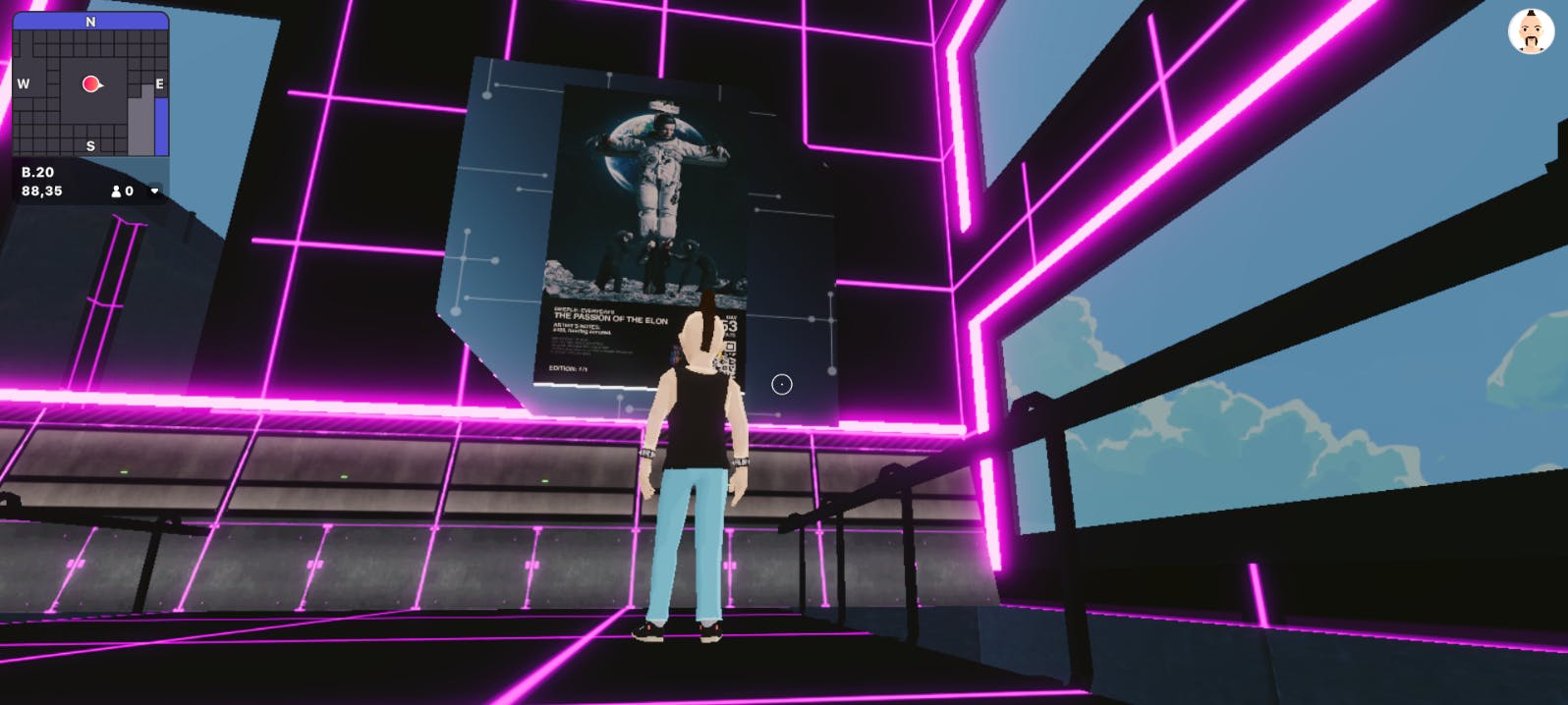
HANS ULRICH OBRIST Philippe Parreno urged me to read Snow Crash back in the late ’90s. It was actually Bruce Sterling who got me on the internet. I was at a conference with him in 1994 and he couldn’t understand why I wasn’t online. He sent me to the cyber cafe to open my first email account. At that time, very few people in the art world were on email.

CHRISTOPHER Y. LEW Much of the language around the metaverse comes out of science fiction, particularly cyberpunk. We’ve moved from the cyberspace of William Gibson’s Neuromancer (1984) and now we’re getting to the metaverse of Neal Stephenson’s Snow Crash. I’ve been thinking about a few artists that I’ve been in dialogue with for many years that are very influenced by science fiction. Sophia al-Maria coined the term Gulf Futurism with Fatima al-Qadiri. That framework used the language of science fiction to talk about the rapidly developing cities of the Gulf, and how quickly Bedouin families like al-Maria’s ended up in these futuristic cities that seemingly appeared overnight. Science fiction has demonstrated how to take the concerns of today and project them into the future in order to understand the present. But they’re also looking at the future from this moment in order to influence what that future can be and not leave it up to giant corporations to make those decisions. That perspective can be very empowering for artists.
HANS ULRICH OBRIST Philippe Parreno urged me to read Snow Crash back in the late nineties. It was actually Bruce Sterling who got me on the internet. I was at a conference with him in 1994 and he couldn’t understand why I wasn’t online. He sent me to the cyber cafe to open my first email account. At that time, very few people in the art world were on email.
The first show Philippe and I did together was Alien Seasons at the Musee de l’Art Moderne de la Ville de Paris in 2002. We invited the futurist Jaron Lanier to collaborate. He’s relevant for many of the things being discussed now. At a restaurant in Paris, he drew a cuttlefish, an animal that communicates almost post-symbolically because its skin is like a projection surface for film, with permanently changing colors and patterns. The cuttlefish not only became the guide through the exhibition, but whenever cuttlefish popped up, other aspects of the show were activated. I connected this whole idea of the virtual in Lanier to the virtual in Deleuze.
LEW There are clear connections between those two generations. Lanier worked on early virtual reality, the promise of which is being delivered today, but for over a decade he has been writing books about the repercussions and dangers of that technology.
OBRIST Dominique Gonzalez-Foerster’s exhibition Alienarium 5, at the Serpentine in 2022, was a speculative environment that invites us to imagine possible encounters with extraterrestrials. The show culminates many decades of her interest in science fiction. The show involves a collaboration with a musician and a perfumier. She transformed the Serpentine into this multisensory, otherworldly environment.
There’s a VR piece that offers alternative forms of connection through extraterrestrial embodiment. You go from the 360-degree panorama, which is a big collage that uses outer space as a framework, to these encounters. It’s about welcoming visitors into a world of expanded possibility. It’s the opposite of War of the Worlds. Alienarium 5 alludes to the metaverse’s potential as a place where artists can create total environments for exploring other forms of existence.
Artists have played such an important role in contributing to the evolution of virtual environments. It raises its question: Should cultural institutions take part in building the metaverse? That’s what the Serpentine does with our Future Art Ecosystems (FAE). The purpose of Future Art Ecosystems is to provide analytical and conceptual tools and strategic guidance for the construction of twenty-first-century cultural infrastructure: the systems that would support art and advanced technologies as a whole, and be responsive to a broader societal agenda. The core team responsible for the production of FAE2 includes the Serpentine R&D Platform (Alex Boyes, Tamar Clarke-Brown, Victoria Ivanova, Eva Jäger, Ben Vickers, and Kay Watson). We have published two reports so far, and the second is about art in the metaverse. We tried to get away from this very restrictive binary of physical and digital. We take a holistic approach, where the physical gallery is no longer at the center, but part of an integrated narrative. Indeed, many NFT artists are straddling the physical and digital worlds perhaps because there doesn’t yet exist decentralized or centralized metaverse spaces at scale that the public is engaging with.
JASON LI Meta Art, formerly called Facebook Open Art, is partnering with organizations like ICA San Francisco, the New Museum, and the Park Avenue Armory to present events and exhibitions. They also host a six-month artist residency at their headquarters, giving artists access to their new technologies, like Horizon Worlds, a free VR virtual world game. That platform isn’t fully built out yet. The avatars and architecture still look very cartoonish. They’re hoping artists can help move it forward.
In terms of software, there are numerous opportunities for pluralism in the metaverse. Hardware is the major bottleneck. Oculus is the most widely used VR headset on the market. But still it has huge technological limitations. It’s very uncomfortable to wear for long periods of time, and there is no way to process two-handed gestures. Meanwhile, platforms like Spatial are offering software for artists to build their own networks. They’re trying to avoid a situation where the metaverse is run like a Web 2.0 platform.

OBRIST I had long conversations a couple of years ago with Tim Berners-Lee about the invention of the World Wide Web in 1989. It was meant to be for everyone. He feels the idea is threatened now because the spaces of social media are commercialized, and the internet can’t be accessed for free without submitting to surveillance. That’s the main concern with the possibility of one company owning the metaverse as a monopoly.
Art engaging with technology continues the legacy of Berners-Lee. We did a show with Sondra Perry, who makes work about Black American experiences and the ways in which technology and identity are entangled, using digital tools like green-screen technology, 3D avatars, and found footage. Perry has said she’s interested in thinking about how Blackness shifts and morphs to combat oppression and surveillance. Net neutrality is at the core of her work. It’s based on ideas of collective production. She uses open-source software to edit the work and then releases it digitally for use in galleries and classrooms while actually making all the work available for free online. Another artist who comes to mind in this context is Sarah Friend. Her practice takes a very subversive approach to working with the blockchain. In Friend’s work Lifeforms (2021), for example, the value of an NFT is dependent on being passed on to other people, otherwise the NFTs will disappear. The lack of permanence to the work suggests avenues to a more spontaneous and incidental metaverse experience, where interpersonal relationships, not ownership, sit at the core of metaverse-mediated public spaces. What will be crucial for the future of art on the blockchain and in decentralized metaverses is an increase in diversity and accessibility. As with all art and the making thereof, it should be for all and accessible to everyone. Limiting such access creates exclusionary domains which are limiting the possibilities of creating—especially within a realm that has the potential to be so vast.
LEW In much of his writing, Jaron Lanier talks about the lock-in effect of protocols. At a certain point these things get prescribed, and then it’s virtually impossible to change them. One of his examples is MIDI. It’s a music technology developed in the early 1980s for keyboard players that didn’t account for how notes could be played on other instruments. What had been designed for a narrow application was adopted as a universal standard for a wide range of digital instruments and ended up locking out other modes of expression. The metaverse has so much potential. Will corporations create new walled gardens? Or will artists and others who are upholding the legacies of pioneers of the internet prevail and create a more open internet? What will intentionally and unintentionally be locked in or out of these new systems?
For his EPOCH Gallery project, Peter Wu+ creates virtual worlds to present exhibitions, in environments based on a street in Hong Kong or a freeport in Luxembourg. These immersive environments become critical contexts for works by other artists. The whole show is sold as an NFT, rather than minting individual works. It keeps each exhibition intact, though in the process it creates a closed system that isn’t to be changed.
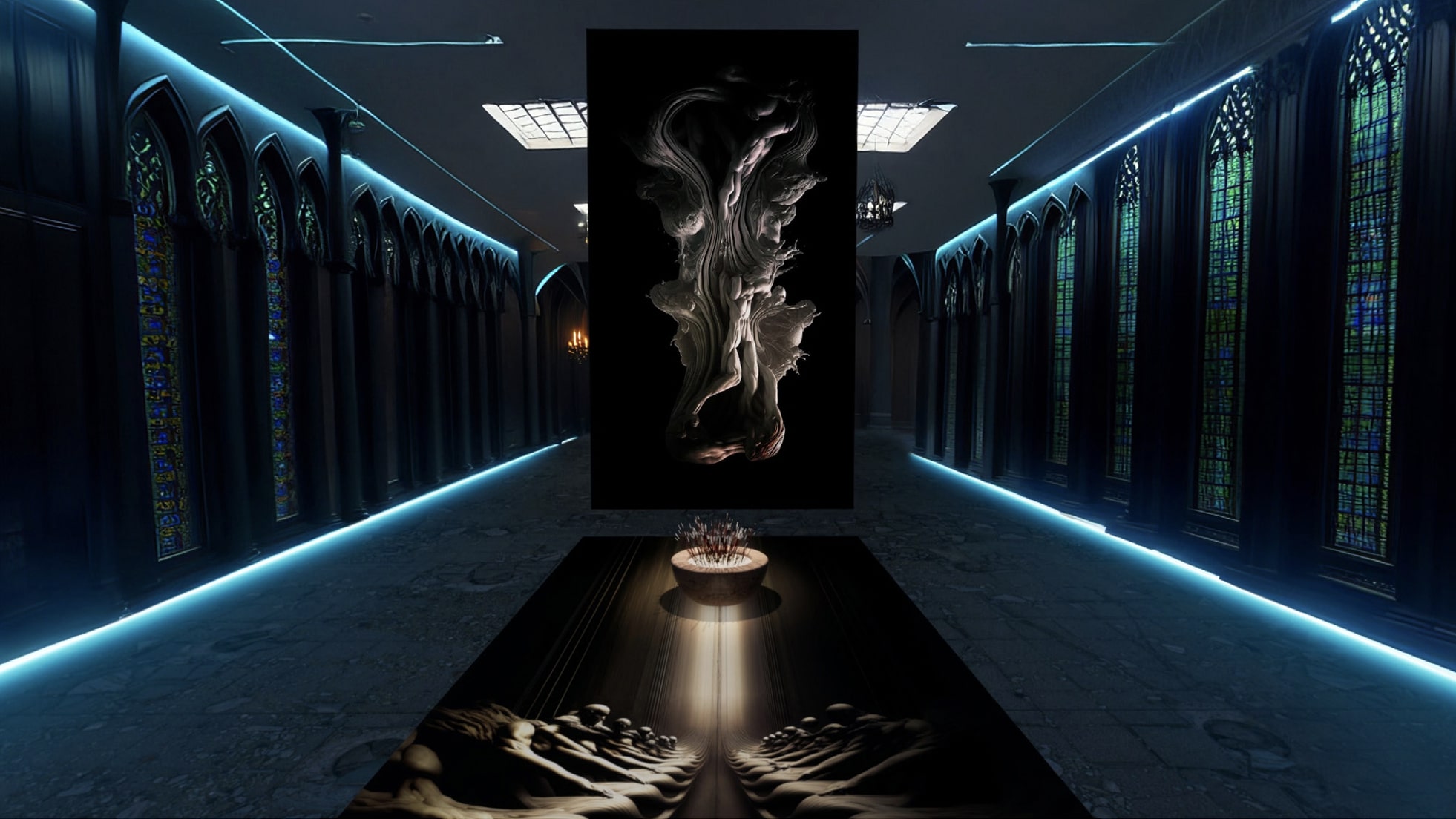
OBRIST That’s interesting. Other artists have built out virtual exhibition environments, too. LaTurbo Avedon built a replica of the permanent venue for the Manchester International Festival in Fortnite. It was the first time we could experience an institution virtually before it opened to the public in the physical world. KAWS: New Fiction (2022) functioned in parallel at the Serpentine and in Fortnite. We had a much younger audience in the galleries and up to ten million people per day online. The exhibition’s success shows the importance of combining physical and virtual experiences and the potential exciting scope for art in the metaverse. Artists like Refik Anadol, for example, are taking the potential of NFTs to a new level by literally altering physical buildings digitally and linking these works to NFTs. Anadol’s studio will take apart buildings layer by layer and remake them digitally to change the experience of them completely into mixed reality. This idea of remaking architecture digitally using AI and machine learning to create speculative and digitally native architectures is an important roadmap for metaverse builders. It would be a missed opportunity to build out metaverse environments using the same physically rooted architectural syntax that are based on the laws of physics coming out of a millennia old post-and-lintel system. Building out virtual worlds to create spaces that people really inhabit is the first opportunity to entirely reinvent architectural languages ungoverned by gravity.
LI Examples like EPOCH Gallery and Fortnite installations bring out the distinction between proprietary systems, where there’s a walled community run by one company, and interoperable systems, where you can move assets between different spaces. Interoperability is one of the main principles of Web3. There are startups working to build a zero layer, a fundamental protocol that allows you to transfer NFTs among different blockchains. It will let you go on different platforms to show your NFTs or take part in various activities using them.
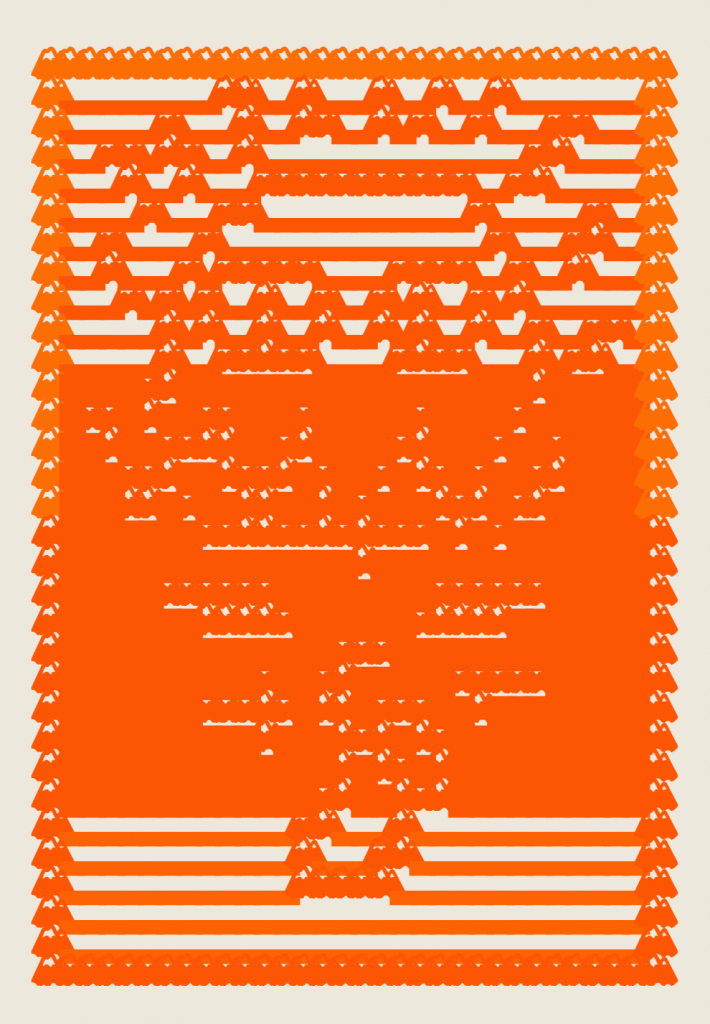
But I believe Meta would want to keep everything inside their ecosystem. That would work the best for them, financially. I don’t see how they can make any fundamental changes without tearing down their whole business model, which revolves around getting data from users. The idea of the metaverse and Web3 is giving data back to users. That’s quite contradictory for them. Other platforms, like Decentraland, sound very sexy and attractive. But I don’t think they’ve ever had more than 2,000 people online at the same time. Their existence is almost like MySpace. True innovators often end up dying out. One of the most innovative projects in the NFT space is Mathcastle’s Terraforms (2021) project, in which 10,000 generative NFTs were encoded within invisible 3D height mapping data both within each individual NFT and then within the network of 10,000 to produce an architecture called the Hypercastle. All the visualization and development of the Hypercastle has been produced by the community owners of the Terraforms project. It is also important to note that the Hypercastle is a speculative architecture in the way that other “metaverse” architectures are always hamstrung by a Cartesian geometry. The result is a digitally native architecture, owned in an NFT native way, where the Hypercastle is owned, visualized, and built by the NFT owners. It’s an exciting model.
As of now, Twitter and Discord are the largest exhibition platforms for NFTs, especially PFP projects. A lot of the crypto talk back in 2011 and 2012 started on Twitter. It’s a text-based platform, so it’s a good place to find explanations and analyses of the crypto market. Weirdly, as visual as NFTs are, Twitter became the headquarters of this whole movement, because the major NFT collectors are long-time Twitter users. Interestingly, when comparing social media platforms with blockchain architectures, Twitter as a structure is by far the closest from a user-interface perspective. Blockchains and Twitter are both text-based platforms, where text is archived and timestamped in chains of comments and quotes. Images are linked crucially below text in the hierarchy (unlike Instagram which leads with the image), which is the same structure for the blockchain, where the ledger records the text or hyperlink to the decentralized file server. In this sense, Twitter can be seen as a more engaging proxy for interacting with the blockchain itself. Perhaps this is a subliminal reason, amongst many others, for Twitter’s supremacy as the current virtual town square or “metaverse” for blockchain-based art and cultural dialogue.
OBRIST I think Twitter is the space where the NFT discussion is happening because of how it gamifies communication. Gamified systems are everywhere in modern life. Very often our desires are shaped by incentives and systems we are not aware of, and we might start playing games we don’t even want to play. We play the game, but the game plays us. The idea of worldbuilding is significant for understanding the metaverse and how art can shape it, but so is the connection between games and agency. We’re getting more and more stuck in this quantified world. And I think that’s where art can liberate us.
LEW Gaming shifts you away from a single subjectivity, too, which lets you open up to something beyond your own identity. It makes me think about the popularization of avatars, whether that’s through PFP NFTs or the whole-body avatars envisioned for the metaverse. I’m curious to hear your thoughts on that, Jason—how PFPs are being adopted now and how that relates to the idea of gamification.
LI What people in the NFT business call utility is a kind of gamification. It means giving people incentives and perks to collect and hold tokens. Moonbirds (2022), a collection of 10,000 PFPs from PROOF, came out after the blue-chip PFP projects but managed to garner high prices because of what they offered to holders. If you “nest” your Moonbird, or register it with PROOF, you’ll accrue benefits as a member of a private club. The longer it nests, the more perks you get. We released James Jean’s project Fragments (2022), where the NFTs are attached to a physical pagoda he is building as well as a virtual pagoda. People who are holding onto the Fragments for this chapter will have the key to enter the next chapter. We suggested adding gamifying factors at the design stage. It’s an experiment for artists as well as for us and the collectors.
Some NFT projects focus exclusively on gamification. It’s almost like what people call play-to-earn games. People go to them purely for financial reasons. It’s a very speculative environment. NFTs are still new at this stage, and different concepts will attract other kinds of people. But I agree with Hans Ulrich that the gaming environment is the backbone of the metaverse, and we need to figure out how to use elements of gamification in ways that are sustainable.
There are many examples of gamified projects that will just become very popular for a month at most. Then the whole system goes down in a death spiral. Once the token value in that gamified system goes down, there are fewer transactions, fewer collectors, more sellers. So those projects need to keep creating hype to draw people in. Axie Infinity is a Pokémon-like game where you fight different paths to earn tokens. It’s one of the largest projects—if not the largest project—in the whole space but it lost a lot of value this year. In the long run if the metaverse has to be built on a gaming environment, we’ll need healthier, more organic systems of gamification.
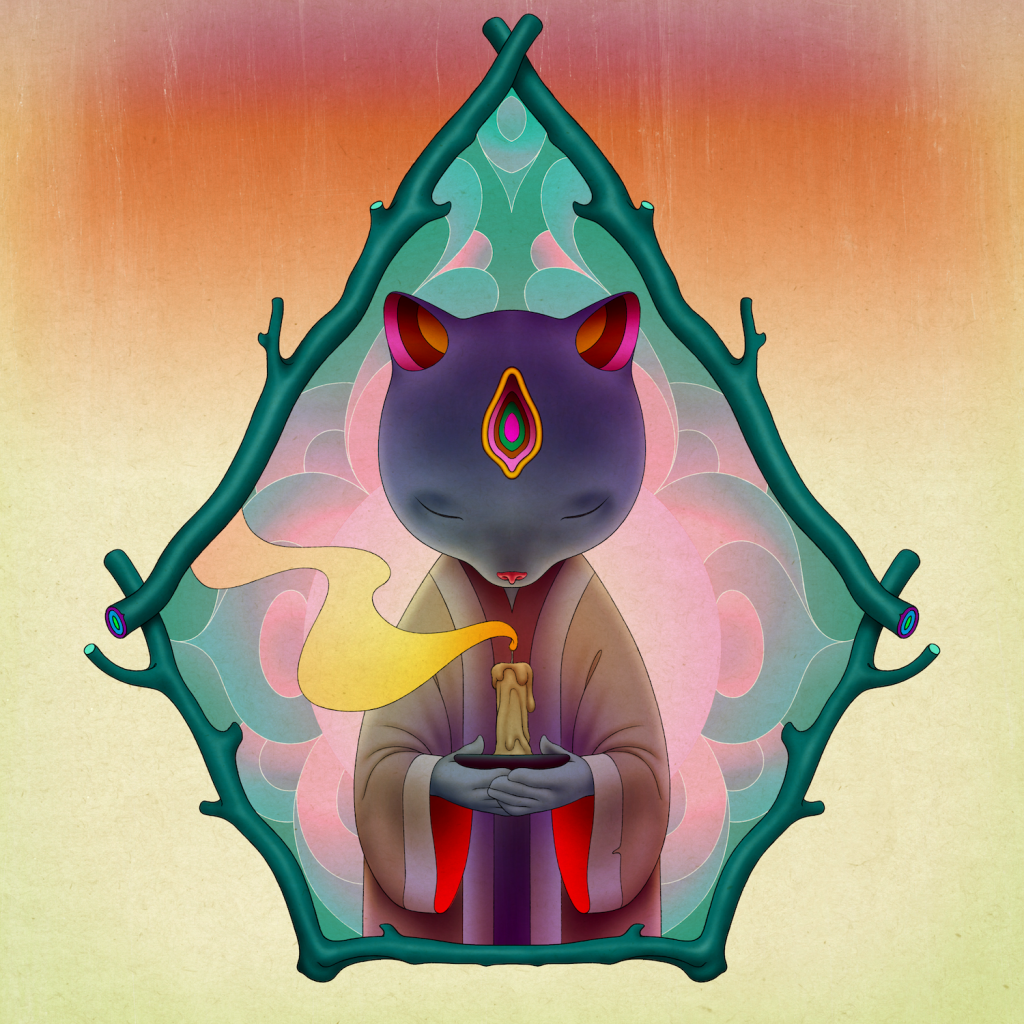
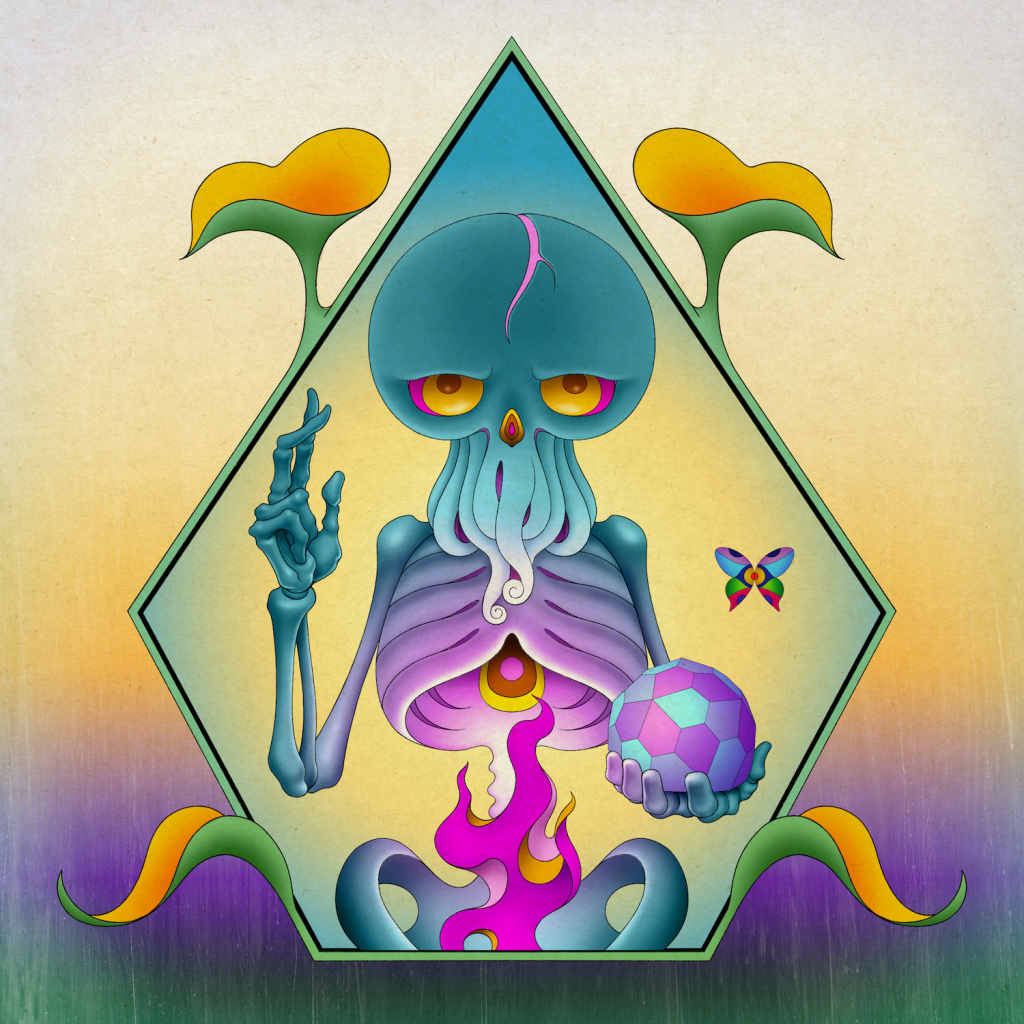
LEW The way text-heavy platforms Twitter and Discord have been adopted by Web3, as opposed to image-based platforms like Instagram, reminds me of how back in the day of dial-up modems, I would play MUDs, or multi-user dungeons, online spaces riffing on Dungeons & Dragons and other role-playing games. With only text it felt really immersive and deeply interactive. That’s the type of thing that I would like to see, whatever comes of the metaverse: that enriched sense of community. MUDs are games, but half the time it felt like people were just there to hang out and socialize, agnostic to whatever gaming system that was there.
OBRIST Multiplayer games are ultimately about the relationship between players. A game can show political action and moral transformation, which of course is interesting in relation to socially transformative art—staging direct interventions into society and politics through multiplayer games. Angela Washko staged performances inside the massively multiplayer online role-playing game World of Warcraft from 2012 to 2016, consisting of conversations with other players about feminism. She started the project to address the misogyny and discrimination she experienced in the game. Gaming holds great potential for political action. In 2021, 2.8 billion people—almost a third of the world’s population—were playing video games. What was once a niche pastime has become the biggest mass phenomenon of our time, bigger than the music and film industry together.
Gaming is becoming to our time what movies were to the twentieth century and what novels were to the nineteenth century. It’s not completely new. Artists are always early. Decades ago artists began to already feel that these game technologies would be important for the infrastructure of the twenty-first century. You can see how artists like Peggy Ahwesh or Sturtevant (1924–2014) integrated the visual language of games, how they appropriated or subverted existing video games, and criticized the often discriminatory and stereotypical depictions you find in mainstream games. Of course at that time it was basically just a small insular group of engineers who completed these games and that made it very non-inclusive. Today, of course, more people have access to the tools of making games. And that means that it’s very different from Hollywood. There’s a really interesting book by Anna Anthropy called Rise of the Videogame Zinesters (2012). “What I want from video games is a plurality of voices, I want games to come from a vital set of experiences and present a vital range of perspectives,” she says. “I can imagine—and you are invited to imagine it with me—a world in which digital games are not manufactured for the same small audience, but one in which games are authored by you and me for the benefit of our peers.” And you can extrapolate that to the metaverse because we don’t want a monopoly. We want a plurality of voices. We want experiences that aren’t manufactured for a homogenized audience—we want a true polyphony or inclusivity.
LEW Anthropy has what I read as a very Gen X, indie mindset that could come back in Web3. She’s thinking about individual makers creating small-form games, as opposed to these huge companies and teams that are making what feel like blockbuster movies. But I wonder if we’re connecting games to the metaverse because of our own myopia. We just don’t know anything else. I’m thinking about the advent of photography and the Pictorialists, who were making images that looked like paintings, trying to mimic a previous form. Maybe we don’t recognize what that new form of art in the metaverse is. While the technological underpinnings are close to gaming engines, we can’t envision what the next step could be.
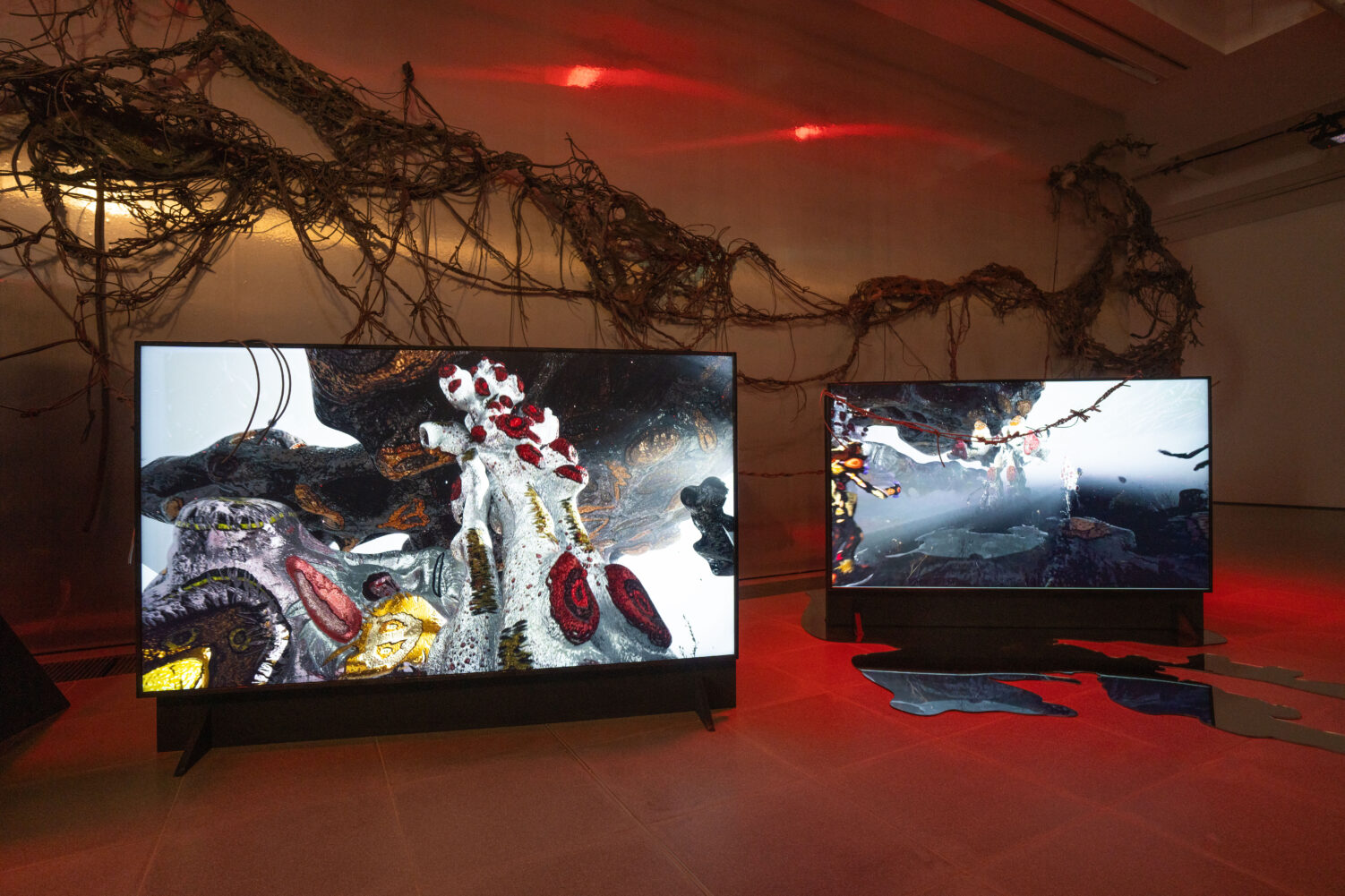
OBRIST At my exhibition Worldbuilding: Gaming and Art in the Digital Age at the Julia Stoschek Collection in Düsseldorf about half of the works are recorded experiences of games. And half are actually games—action games, multiplayer games, one person games, and so on. The show becomes a situation where people can play these games. At a museum, immersive installations can become part of the game. They create surroundings that players can’t have at home, integrating physical space in the experience of the game. Rauschenberg always said that we need to think more about time in relation to art. There’s so much talk about space but time has been neglected. It’s astonishing how little time people spend in front of art at exhibitions. It differs from statistic to statistic, but it’s always shockingly low. Meanwhile over the last couple of weeks, I’ve spent about 20 hours with Elden Ring. A friend said he’s played it for a hundred hours. We really spend a lot of time with games. The video games industry has spent decades developing, prototyping, and operationalizing the technologies for the creation of hybrid digital-physical experiences that involve bodily interaction and avatars; digital spatial experiences that are seemingly unlimited in scale and imagination; and facilitation of multiparty, real-time interactions with other users and the digital environment. Game technologies are becoming the fundamental infrastructure for the metaverse—an ecosystem of virtual worlds that is likely to transform the internet and may become the gateway to a spatial web. Danielle Brathwaite-Shirley is an amazing, unusually prolific artist and archivist and game designer whose work centers on Black trans people. As she designs and builds physical and virtual worlds, she’s thinking about interactivity, how the viewer is implicated in the way each work progresses and is experienced. Her work shows how play can affirm and build community. It provides a model for an inclusive and impactful approach to the metaverse. Another great example is the practice of Gabriel Massan. Massan is a multidisciplinary digital artist, combining storytelling and world-building techniques to create digital worlds and sculptures that alternatively simulate and narrate situations of inequality within the Black-Indigenous Latin American experience. We are working at the Serpentine with Massan and a team of collaborators on, what Massan describes as a “consciousness-raising game that explores Black-Indigenous Brazilian experiences.” [Editor’s note: the game, Third World: The Bottom Dimension, was released following this conversation.]
LEW Artists have found compelling ways to translate the individual gaming experience to the more public form of a gallery. Feng Mengbo’s Long March: Restart (2010) emphasizes the immersive aspect of the experience, making it different than playing a traditional video game alone in front of your TV. His work is a multichannel installation with floor-to-ceiling images. It really feels like you’re in the game, holding a cordless controller and walking along with the side scroller in order to keep up with the figure that you’re playing. Q4U (2002), Feng’s early hack that modified the popular first-person shooter game Quake, did something totally different. He replaced the enemies with images of himself holding a video camera to raise the specter of pervasive surveillance. But the physical experience was something I was thinking about when I was co-organizing the 2017 Whitney Biennial. Mia Locks and I invited Porpentine Charity Heartscape to take part, and her games are really intimate experiences written in HTML. They’re interactive narratives, and players have to choose different paths. How do you make that into a more public experience? Certainly people could sit at a station and play. But we also projected the screen from one station onto a large wall, so visitors could watch someone play and make decisions. It’s important for an exhibition to create a shared experience that you can’t have when you’re playing a game at home. It’s that kind of sociality that leads to community formation. There’s a similar potential for what the metaverse can do to bring people together.
OBRIST Ben Vickers, who started the art and technology program at the Serpentine, always said: Can we network an existing institution, or do we just need a new institution? Of course I think the answer is both/and instead of either/or. I hope that our Future Art Ecosystems reports show how one can actually network an existing institution at the Serpentine, and that’s what our digital projects and mixed-reality projects are trying to do. Of course that raises the question of what a completely new institution from scratch for this age would look like.
Joan Littlewood (1914–2002), a pioneer of street theater, and the architect and urbanist Cedric Price (1934–2003)—it’s very important to credit them both because very often only Cedric is named—dreamt of a space they called the Fun Palace where people in the community could come together to celebrate art and science and culture. You could choose what you wanted to do. You could watch someone else doing it. And that’s what happens at a gaming exhibition—you can learn how to play a game by watching others do it. But the idea of the Fun Palace was that you could learn how to handle tools, listen to your favorite tune, dance, talk, or watch how other people make things work. You could just lie back and stare at the sky.
The inspiration came from traditional pleasure gardens, which were for the community as a whole. Cedric and Joan wanted a laboratory of fun, a university of the streets. Cedric collaborated with Gordon Pask who was one of the great cyberneticians of that time. I think the vision for the Fun Palace has a lot to do with cybernetics. When I met with Cedric and we started to have these conversations about the Fun Palace, I wanted to know more about cybernetics. I went to see this last surviving pioneer of the cybernetic movement, Heinz von Foerster (1911–2002). He believed that scientists were like artists. He worked in the mid-1940s with Norbert Wiener (1894–1964), and then in the 1960s, he founded the field of second-order cybernetics in which the observer is understood as part of the system itself, not an external entity. This legacy could be seen as an alternative intellectual history of the blockchain—one that is less focused on the libertarian drive to make public institutions obsolete and allow technology-based self-determination, and instead concerned with building the groundwork for effective collaboration and mutual support. Von Foerster summed up the lessons of cybernetics as learning to think in circles. It’s very interesting to think about how a circular art organization would work.
LEW We’re at an inflection point where people are asking what role institutions should play in society and what is appropriate or necessary right now. As new territories in which an increasing portion of social and cultural interaction will be mediated, metaverse organizations need to be nimble and responsive to this. Places such as 6529’s Open Metaverse, which is free for anyone to access and take part in building, offer new alternatives and visions. That’s the spirit of pluralism and portability—the qualities of an ideal metaverse—that we’re all hoping will be instilled in the future we are collectively creating.
—Moderated by Brian Droitcour
